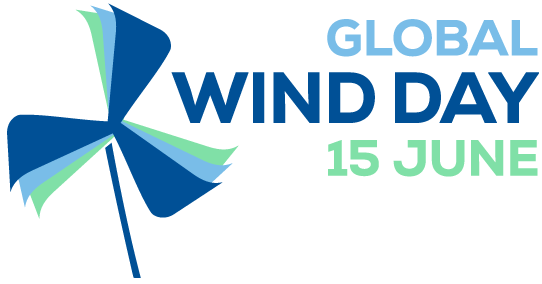
Katherine Dykes is a Section Head at the Department of Wind Energy of the Technical University of Denmark. She has a PhD from the Engineering Systems Division of the Massachusetts Institute of Technology where her thesis centered on the interplay between wind technology innovation and deployment. She holds two MS degrees from the Ohio State University in Electrical Engineering and in Agricultural, Environmental and Resource Economics, and she has a dual-BS degree from the University of Pennsylvania’s Jerome Fisher Program on Management of Technology.
What was it that drew you to wind power and renewable energy? Could you describe your beginnings?
While doing my masters degree in solar energy at the Ohio State University, I started working for a not-for-profit called Green Energy Ohio. They had a number of data sets from “anemometer loan programs” and a “tall towers” cell phone tower research program with various wind meteorological equipment and they had no one in house capable of analyzing the data and providing reports back to the program participants and sponsors.
Given my background in mathematics and software, they asked if I could do it. It was then I began working with National Renewable Energy Laboratory (NREL) and using reports and guidance from them on how to do preliminary wind resource assessment for a site including filtering the data, using longer term weather stations and MCP methods to estimate the general resource, etc. Through that process, I learned about wind technology more generally and became excited about the complexity of it as a multi-disciplinary research field versus solar which really lives at the intersection of materials and electrical engineering research.
For my PhD in systems engineering which was more methodological in focus, wind energy simply seemed to be a more interesting application area so I transitioned my focus to wind energy for my PhD and beyond.
For those who are new to wind energy – what is it that they should first learn to be drawn in in the same way that you were drawn to it?
For me, what has always been interesting about wind is how simple and complex it is at the same time. A lot of people think wind energy is just three blades that you stick on a generator that spins and produces electricity. For anyone that works in wind, we know what a difficult and complex multi-disciplinary technical system it is and that we have so much more still to learn about it.
That’s what really makes it an exciting research field. There is an endless source of research questions still today and resolving these questions will help us make wind energy even more competitive for future energy systems (see the article “Grand Challenges in the Science of Wind” in Science Magazine for more on this).
In your opinion, what is the imminent challenge that the wind industry is facing today?
The biggest challenge now is how do we move beyond being competitive on LCOE (wind energy is very competitive on unsubsidized LCOE in many areas already) to being competitive in terms of the overall value it brings to our energy system. How can we innovate in wind energy so that it can become the foundation of the low-carbon 21st century electricity and broader energy system?
Compare how much progress the wind industry has achieved in just a few decades to what you believe will be the future?
It took us decades to get to over half a terawatt of wind installed today (now around 0.6 TW). But, we need to grow that by a factor of 10 to be where we need to be by mid-century to address climate-change. Growing to that scale will face many technical challenges, but also broader challenges related to social acceptance, environmental impact, transformation of our overall electricity and energy systems, and other deployment challenges that can vary substantially depending on the region of the world where wind is installed.
The year is 2120. What will the wind industry look like a century from now?
Hopefully, the wind sector will be self-sustained within the overall energy sector that has realized a carbon-neutral economy that provides affordable electricity and energy for our global society.
For more insight into Katherine’s work, read her co-authored article about the grand challenges in the science of wind energy in Science Magazine here.
